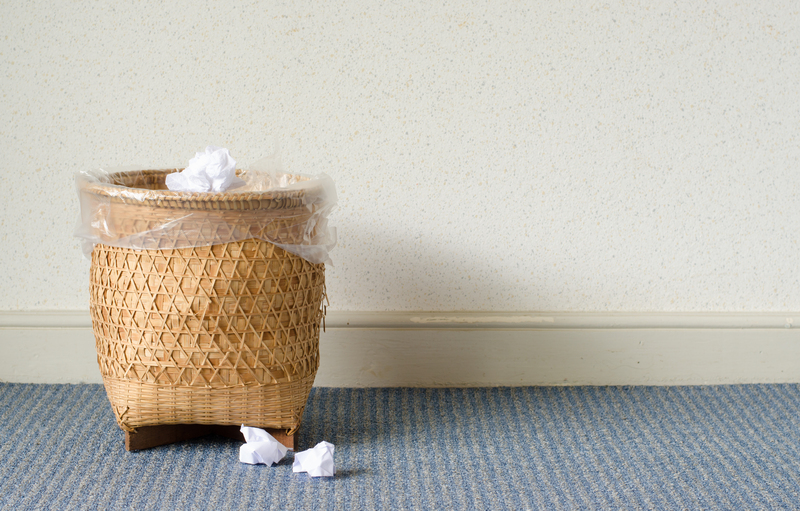Eco-Friendly Solutions for Getting Rid of Bulky Furniture Items
Out with the old, but not out with the environment! When it comes to ridding your home or office of those cumbersome couches, tables, or cabinets, it's vital to consider options that won't harm the planet. Disposing of furniture responsibly can be a daunting task, but with the right knowledge and resources, you can make environmentally conscious choices that extend the lifecycle of your belongings and reduce landfill waste. In this comprehensive guide, we'll explore various eco-friendly solutions for getting rid of bulky furniture items. From donation and recycling to creative upcycling, you'll find a method that suits your needs while minimizing your ecological footprint.
Why Eco-Friendly Furniture Disposal Matters
Bulky furniture items such as sofas, wardrobes, beds, and tables often contain materials--like treated wood, metal, plastics, and textiles--that take centuries to decompose in a landfill. Besides taking up valuable space, decaying furniture can release harmful chemicals and greenhouse gases, negatively impacting our ecosystem.
Responsible furniture disposal not only protects the environment but also conserves resources and supports communities through donation and reuse. Let's dive into the best eco-friendly solutions for disposing of large unwanted furniture.

Top Eco-Friendly Solutions for Bulky Furniture Disposal
1. Donate Usable Furniture to Charity
One person's old couch might be another person's favorite reading chair! If your furniture is still in good condition, donating bulky items is a win-win scenario.
- Charity organizations such as Goodwill, The Salvation Army, and Habitat for Humanity restore and resell donated furniture to help those in need.
- Local shelters, community centers, or churches often accept large furniture donations, providing essentials to people going through tough times.
- Schedule a free or low-cost pickup--many organizations offer this service, making the process seamless for you while ensuring your furniture continues to serve a purpose.
Tip: Ensure your items are clean and free of major damage. Most charities won't accept furniture with severe stains, structural issues, or infestations.
2. Sell or Give Away Bulky Furniture Locally
If you have a piece in decent shape, selling, swapping, or gifting furniture locally is another green disposal method. This keeps items in circulation and cuts down transportation emissions.
- Online marketplaces like Craigslist, Facebook Marketplace, OfferUp, or local community boards are ideal platforms for posting your unwanted pieces.
- Neighborhood freecycle groups promote exchanging used goods, minimizing waste and expense for all involved.
- Host a garage sale or set big pieces at the curb with a "free" sign--many cities have designated days for placing unwanted objects on the sidewalk for others to claim.
Always follow local ordinances about street giveaways and ensure items are placed safely so as not to block sidewalks or create hazards.
3. Repurpose and Upcycle Old Furniture
Get creative and give your furniture a second life! Upcycling bulky items not only keeps them out of landfills but also saves you money and offers a chance to personalize your space.
- Convert wooden pallets or tables into bookshelves, garden beds, or benches with a little DIY effort.
- Paint, reupholster, or refinish your old furniture to match your current decor.
- Transform a battered sofa into a stylish outdoor daybed, or break down a large cabinet for use as storage cubes.
Hundreds of online tutorials provide inspiration for eco-conscious upcycling, and it can become a fun family or community project too!
4. Recycle Furniture Responsibly
When items are beyond repair or repurposing, proper recycling is the next best option. Many parts of bulky furniture can be diverted from the landfill if separated and handled correctly.
- Metal components (like frames or springs) are highly recyclable--scrap yards or metal recyclers usually accept them.
- Wood can often be chipped or repurposed; check with local recycling centers for policies about treated vs. untreated lumber.
- Mattresses and upholstered items may have specific recycling programs due to different materials--contact regional waste authorities for guidance.
- Electronics within furniture (lighting, recliner motors, etc.) need e-waste recycling to safely recover valuable elements and avoid toxic contamination.
Always check with your municipality or area recycling facility for details on what can be recycled, as rules vary based on location and material.
5. Schedule an Eco-Friendly Junk Removal Service
If you can't move it yourself or have many items, eco-friendly junk removal companies are an excellent alternative. Many now prioritize sustainability by:
- Sorting through items to separate reusable or recyclable components.
- Donating usable furniture to local organizations.
- Transporting salvageable materials to appropriate recycling or processing facilities.
Research companies that specifically advertise green furniture removal. Check their disposal practices and eco-certifications before booking to ensure true commitment to sustainability.
6. Contact Your Municipal Bulk Pickup or Special Collection Program
Many cities provide scheduled bulk waste pickups as part of their civic waste management services, but not all of them are environmentally responsible by default. Look for special programs or collection events focusing on donation or recycling routes.
- Call your local sanitation department to inquire about eco-friendly disposal options.
- Some programs offer separation or sorting to ensure recyclable/reusable materials are diverted away from landfills.
Remember: Improperly placed or unapproved items may sit for weeks or end up trashed, so always follow guidelines.
7. Partner with Local Artists or Maker Spaces
Artists, crafters, and DIYers love unique materials! If you have unusual furniture pieces or interesting wood, metal, or fabric components, try contacting local art schools, maker spaces, or community art groups.
- Many artists repurpose old materials into sculptures, installations, or furniture restoration projects.
- Schools may use discarded items for stage sets or shop classes.
This solution not only helps the environment but also fosters local creativity and resourcefulness.
8. Look Into Furniture Manufacturer Take-Back Programs
Several furniture manufacturers offer take-back or recycling programs for their products. They may dismantle items and reuse components in new furniture or recycle materials responsibly.
- IKEA and some office furniture brands offer item return or recycling services. Check online or with the retailer for participation guidelines.
Tip: Always retain your purchase records, as some programs require proof of original purchase for free take-back services.
Preparing Bulky Furniture for Eco-Friendly Disposal
Before you donate, recycle, or dispose of your furniture, it's important to prepare items carefully. This facilitates their journey to a new life and makes the process easier for everyone involved:
- Clean the item thoroughly--wipe down surfaces, vacuum upholstery, and remove dust or debris.
- Disassemble where possible (remove legs, arms, or separate sections) for easier transport.
- Remove all personal items or attached accessories.
- Take clear photos for potential buyers, charities, or online listings.
Eco-Friendly Furniture Disposal Success Stories
Case Study: Turning Trash into Community Treasure
In many urban areas, creative community partnerships have successfully redirected thousands of pounds of bulky waste from landfills. For example, a major North American city partnered with a non-profit organization to collect curbside furniture and distribute reusable pieces to low-income families and schools. This initiative not only benefitted the environment but also enriched the lives of local residents.
The Power of Online Furniture Exchanges
A suburban neighborhood started a "Furniture Swap Meet" Facebook group, allowing residents to post listings for free or low-cost items. The result? Tons of furniture found new homes within the community, keeping valuable resources in circulation and saving money for all involved.

Common FAQs on Environmentally Responsible Furniture Removal
Is it possible to recycle all furniture?
Not all furniture is easily recyclable. Some items may be constructed from composite materials or contain hazardous components. However, there are often local specialists or municipal programs equipped to dismantle and responsibly process most furniture types. When in doubt, call your city waste or recycling department for advice.
Are there costs involved in eco-friendly furniture disposal?
Donating or giving away unwanted furniture is generally free and may even result in a tax deduction. Recycling and junk removal services sometimes charge a fee, though municipal bulk pickup is often included in city services. Always compare options and factor in transport or disposal fees where relevant.
What's the fastest green way to get rid of bulky furniture?
Donating to charity with pickup service or posting free listings in local online groups are usually the quickest methods. For immediate removal, contact an eco-friendly junk removal company--but always check how they dispose of items.
Conclusion: Make Your Furniture Exit an Eco-Friendly One
Getting rid of bulky furniture doesn't have to mean damaging the planet. By choosing eco-friendly furniture disposal solutions--from donation and resale to recycling and creative reuse--you help foster a circular economy, minimize landfill waste, and support your community. Even one responsible action can spark wider change!
- Assess what you have--decide if it can be reused, repurposed, recycled, or donated.
- Contact local organizations and recycling facilities for guidance on your specific items.
- Think creatively and involve your community for environmentally positive outcomes.
Next time you're facing a big move, remodel, or decluttering session, remember these sustainable solutions for getting rid of bulky furniture--and do your part for a greener world!